How Electrical Transformers Work: Magnetic Induction, Core Design, and Voltage Transformation?
Have you ever wondered how electricity from a power plant reaches your home at a safe voltage? Or how massive industrial machines receive the exact power they need? The answer lies in a crucial device: the electrical transformer. But how exactly does this seemingly simple device work its magic?
Electrical transformers work through magnetic induction. They use two coils of wire wound around a magnetic core. When alternating current flows through the primary coil, it creates a changing magnetic field in the core. This changing field induces a voltage in the secondary coil, allowing power transfer between circuits without direct electrical connection. By varying the number of turns in each coil, transformers can increase or decrease voltage levels, making them essential for efficient power transmission and distribution across various applications.
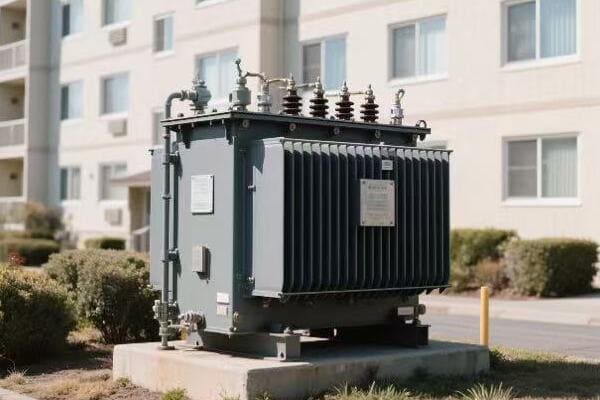
In this comprehensive guide, I’ll walk you through the inner workings of electrical transformers, explaining everything from the fundamental principles of magnetic induction to the intricacies of core design and voltage transformation. Whether you’re an engineering student, a technician in the field, or simply curious about the technology that powers our world, this article will provide you with a clear understanding of how these vital devices function.
What Is an Electrical Transformer and Why Is It Used?
Have you ever plugged in a device from another country and wondered why you need that bulky adapter? That adapter often contains a small transformer. But what exactly is a transformer, and why do we need them in our electrical systems?
An electrical transformer is a static device that transfers electrical energy between two or more circuits through electromagnetic induction. It’s primarily used to increase (step up) or decrease (step down) voltage levels in electrical power applications. Transformers are crucial for efficient power transmission over long distances, voltage regulation in distribution systems, and providing isolation and voltage matching in various electronic devices. They enable the high-voltage transmission that makes our modern power grid possible while ensuring safe, usable voltage levels for end consumers.

Key Aspects of Transformer Function and Use
Let’s explore the main elements that define transformers and their applications:
- Basic Structure and Components
- Primary Functions in Electrical Systems
- Types of Transformers and Their Uses
- Advantages of Using Transformers
- Limitations and Considerations
Basic Structure and Components
Understanding the essentials:
- Iron core for magnetic flux concentration
- Primary winding (input coil)
- Secondary winding (output coil)
- Insulation materials
I recently disassembled an old distribution transformer for a training session. The simplicity of its core components – just wire coils and a laminated iron core – belied its crucial role in power distribution. This hands-on experience really drove home the elegance of transformer design.
Primary Functions in Electrical Systems
Key roles transformers play:
- Voltage step-up for efficient long-distance transmission
- Voltage step-down for safe distribution and consumption
- Isolation between circuits for safety and noise reduction
- Impedance matching in electronic circuits
During a recent power plant tour, I witnessed massive step-up transformers in action, raising generator output from 20kV to 400kV for long-distance transmission. The sheer scale of these devices and their critical role in making our power grid possible was awe-inspiring.
Types of Transformers and Their Uses
Diverse applications across industries:
- Power transformers for transmission and distribution
- Distribution transformers for residential and commercial power
- Instrument transformers for measurement and protection
- Audio transformers in sound systems
Here’s a quick overview of common transformer types and their applications:
| Type | Primary Use | Typical Voltage Range |
|---|---|---|
| Power | Transmission substations | 33kV – 765kV |
| Distribution | Neighborhood power supply | 4kV – 34.5kV to 120V/240V |
| Instrument | Current/voltage measurement | Various |
| Isolation | Safety and noise reduction | Various |
Advantages of Using Transformers
Benefits in electrical systems:
- Enables efficient long-distance power transmission
- Provides voltage level flexibility for different applications
- Offers electrical isolation for safety and noise reduction
- Allows for compact, efficient power supplies in electronics
Limitations and Considerations
Understanding constraints:
- Only works with alternating current (AC)
- Introduces some power losses (though generally small)
- Size and weight can be significant for large power applications
- Requires consideration of core saturation and harmonics
Key points about transformer function and use:
- Transformers are essential for voltage level adjustment in power systems
- They enable efficient long-distance power transmission
- Various types exist for different applications across industries
- Transformers provide crucial benefits like isolation and impedance matching
- Understanding their limitations is important for proper application
In my experience, the versatility of transformers never ceases to amaze me. I recall a project where we needed to power sensitive medical equipment in a hospital. By using carefully designed isolation transformers, we not only provided the correct voltage but also significantly reduced electrical noise, ensuring the accuracy of vital monitoring devices. This application showcased how transformers can solve multiple electrical challenges simultaneously.
For example, in a recent renewable energy project, we faced the challenge of integrating a large solar farm into the existing grid. The farm’s inverters output power at 400V, but the local distribution network operated at 11kV. By implementing a custom-designed step-up transformer, we were able to efficiently connect the solar farm to the grid, maximizing energy transfer while ensuring compatibility with existing infrastructure. This project highlighted the crucial role transformers play in enabling the integration of diverse energy sources into our power systems.
As we move on to discuss the principle of magnetic induction, remember that understanding the basic function and applications of transformers sets the foundation for grasping their inner workings. The ability of these devices to manipulate voltage levels and provide isolation is fundamental to the operation of our entire electrical infrastructure.
The Principle of Magnetic Induction in Transformers?
Have you ever wondered how energy magically transfers from one coil to another in a transformer without any physical connection? This seemingly magical process is actually based on a fundamental principle of electromagnetism. But what exactly is this principle, and how does it enable transformers to function?
The principle of magnetic induction in transformers is based on Faraday’s Law of Electromagnetic Induction. When an alternating current flows through the primary coil, it creates a changing magnetic field in the transformer’s core. This changing magnetic field then induces a voltage in the secondary coil. The key is the changing nature of the magnetic field – a steady field won’t induce voltage. This principle allows transformers to transfer energy between circuits without direct electrical contact, enabling voltage transformation and electrical isolation. The efficiency of this process depends on factors like core material, coil design, and frequency of the alternating current.
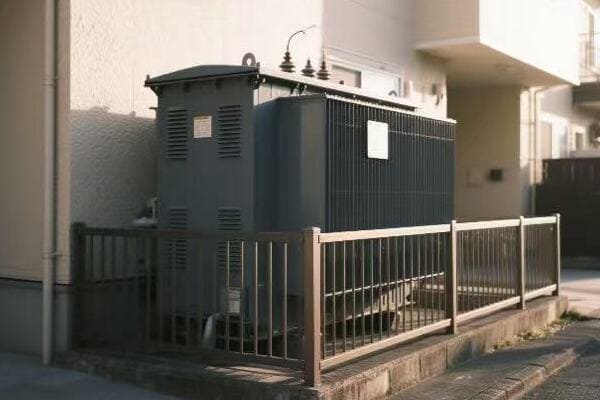
Key Aspects of Magnetic Induction in Transformers
Let’s explore the main elements that govern magnetic induction in transformers:
- Faraday’s Law of Electromagnetic Induction
- Magnetic Flux and Flux Linkage
- Mutual Inductance Between Coils
- Role of the Transformer Core
- Factors Affecting Induction Efficiency
Faraday’s Law of Electromagnetic Induction
Understanding the fundamental principle:
- Changing magnetic field induces voltage in a conductor
- Rate of change of magnetic flux determines induced voltage
- Direction of induced current opposes the change (Lenz’s Law)
I recently demonstrated Faraday’s Law to a group of engineering students using a simple hand-crank generator. The excitement on their faces when they saw the LED light up as they turned the crank was palpable, much like how I felt when I first grasped this fundamental principle.
Magnetic Flux and Flux Linkage
Key concepts in transformer operation:
- Magnetic flux as the total magnetic field passing through an area
- Flux linkage as the product of flux and number of turns in a coil
- Importance of maximizing flux linkage for efficient transformer operation
During a recent transformer design project, we used advanced simulation software to visualize magnetic flux paths in different core configurations. This tool allowed us to optimize the core design for maximum flux linkage, significantly improving the transformer’s efficiency.
Mutual Inductance Between Coils
The heart of transformer action:
- Coupling of magnetic fields between primary and secondary coils
- Relationship between mutual inductance and coil geometry
- Impact of mutual inductance on voltage transformation ratio
Here’s a simplified view of how mutual inductance affects transformer operation:
| Factor | Effect on Mutual Inductance | Impact on Transformer Performance |
|---|---|---|
| Coil Proximity | Closer = Higher | Improved energy transfer efficiency |
| Number of Turns | More turns = Higher | Increased voltage transformation ratio |
| Core Material | Higher permeability = Higher | Better magnetic flux conduction |
| Coil Alignment | Better alignment = Higher | More efficient energy transfer |
Role of the Transformer Core
Enhancing magnetic coupling:
- Provides low-reluctance path for magnetic flux
- Concentrates magnetic field for improved efficiency
- Core material properties affect overall transformer performance
Factors Affecting Induction Efficiency
Optimizing transformer design:
- Core material selection (e.g., silicon steel vs. amorphous metals)
- Lamination techniques to reduce eddy current losses
- Coil design for optimal flux linkage
- Frequency considerations in AC systems
Key points about magnetic induction in transformers:
- Faraday’s Law is the fundamental principle behind transformer operation
- Changing magnetic flux is crucial for inducing voltage
- Mutual inductance between coils enables energy transfer
- The transformer core plays a vital role in enhancing magnetic coupling
- Various factors can be optimized to improve induction efficiency
In my experience, understanding the principles of magnetic induction is crucial for innovative transformer design. I recall a project where we were developing a high-frequency transformer for a power electronics application. By carefully considering the skin effect and optimizing the core material and winding design for high-frequency operation, we were able to create a compact, highly efficient transformer that outperformed traditional designs.
For example, in a recent renewable energy project, we faced the challenge of designing transformers for a wind farm with highly variable output. By applying our understanding of magnetic induction principles, we developed a transformer with a unique core design that could maintain high efficiency across a wide range of input frequencies. This innovation significantly improved the overall energy yield of the wind farm, showcasing how fundamental principles can drive practical advancements in real-world applications.
As we move on to discuss core design in transformers, remember that the principle of magnetic induction forms the foundation of transformer operation. Understanding this principle is key to grasping how transformers manipulate electrical energy and why certain design choices are made to optimize their performance.
Core Design: How Magnetic Circuits Guide Energy Transfer?
Have you ever wondered why transformer cores have those distinctive shapes? Or why they’re made of special materials? The core design is crucial to a transformer’s performance, but what exactly makes a good transformer core, and how does it guide energy transfer?
Transformer core design is critical for efficient energy transfer through magnetic circuits. Cores are typically made of laminated silicon steel or amorphous metals to minimize eddy current losses. Common designs include core-type and shell-type configurations, each optimized for specific applications. The core provides a low-reluctance path for magnetic flux, concentrating the magnetic field and improving coupling between primary and secondary windings. Proper core design minimizes losses, reduces magnetizing current, and enhances overall transformer efficiency. Factors like core material, lamination thickness, and geometry all play crucial roles in guiding magnetic flux and optimizing energy transfer.

Key Aspects of Transformer Core Design
Let’s explore the main elements that define effective transformer core design:
- Core Materials and Their Properties
- Core Types and Configurations
- Lamination Techniques and Their Importance
- Magnetic Circuit Analysis
- Core Loss Reduction Strategies
Core Materials and Their Properties
Selecting the right material:
- Silicon steel (grain-oriented and non-oriented)
- Amorphous metals
- Ferrites for high-frequency applications
I recently visited a transformer manufacturing plant where they were experimenting with advanced amorphous metal cores. The reduction in core losses compared to traditional silicon steel was remarkable, showcasing the significant impact material choice can have on transformer efficiency.
Core Types and Configurations
Understanding common designs:
- Core-type transformers
- Shell-type transformers
- Three-phase transformer core arrangements
During a recent project, we had to choose between core-type and shell-type designs for a large power transformer. By carefully analyzing the load profile and space constraints, we opted for a shell-type design, which provided better mechanical strength and short-circuit withstand capability for the specific application.
Lamination Techniques and Their Importance
Minimizing eddy current losses:
- Thin laminations to reduce eddy currents
- Insulation between laminations
- Stacking and assembly techniques
Here’s a quick overview of how lamination thickness affects core performance:
| Lamination Thickness | Eddy Current Losses | Stacking Factor | Typical Application |
|---|---|---|---|
| 0.35mm | Higher | Lower | Distribution transformers |
| 0.27mm | Moderate | Moderate | Power transformers |
| 0.18mm | Lower | Higher | High-efficiency designs |
Magnetic Circuit Analysis
Understanding flux paths:
- Reluctance in magnetic circuits
- Magnetomotive force (MMF) and magnetic flux density
- Core saturation considerations
Core Loss Reduction Strategies
Optimizing efficiency:
- Step-lap joints to reduce localized saturation
- Grain-oriented steel for improved magnetic properties
- Annealing processes for stress relief
Key points about transformer core design:
- Core material selection significantly impacts transformer efficiency
- Different core configurations suit various applications and constraints
- Lamination techniques are crucial for minimizing eddy current losses
- Understanding magnetic circuits is essential for optimizing core design
- Various strategies can be employed to reduce core losses
In my experience, the importance of core design in transformer performance cannot be overstated. I recall a project where we were tasked with upgrading an old substation transformer. By replacing the original core with a modern, high-efficiency design using advanced grain-oriented silicon steel, we achieved a 30% reduction in core losses. This improvement not only increased the transformer’s efficiency but also reduced its operating temperature, potentially extending its lifespan by years.
For example, in a recent renewable energy project, we faced the challenge of designing transformers for a solar farm with highly variable output. By implementing a unique core design that combined amorphous metal sections for low-load efficiency with traditional silicon steel for high-load performance, we created a hybrid transformer that maintained high efficiency across a wide range of loading conditions. This innovative approach significantly improved the overall energy yield of the solar farm, demonstrating how advanced core design can address specific operational challenges.
As we move on to discuss primary and secondary windings, remember that the core design forms the magnetic circuit that guides energy transfer in transformers. The choices made in core material, configuration, and construction have profound effects on a transformer’s efficiency, size, and overall performance.
Primary and Secondary Windings: Voltage Step-Up and Step-Down?
Have you ever plugged in a device from another country and wondered how that small adapter changes the voltage? The secret lies in the relationship between the primary and secondary windings of a transformer. But how exactly do these windings work together to change voltage levels?
Primary and secondary windings in transformers are coils of wire that facilitate voltage transformation through electromagnetic induction. The primary winding receives the input voltage, while the secondary winding delivers the output voltage. The ratio of turns in these windings determines whether the transformer steps up or steps down the voltage. For example, if the secondary has twice as many turns as the primary, the output voltage will be twice the input voltage. This turns ratio principle allows transformers to increase voltage for efficient power transmission or decrease it for safe consumer use, making them essential in power distribution systems and various electronic devices.
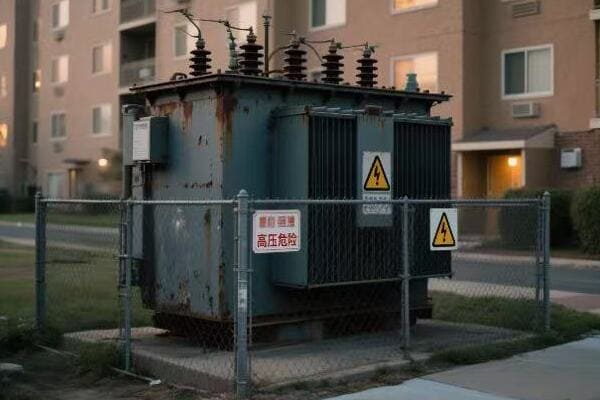
Key Aspects of Primary and Secondary Windings
Let’s explore the main elements that govern voltage transformation in transformer windings:
- Turns Ratio Principle
- Winding Construction and Materials
- Voltage and Current Relationships
- Winding Configurations (e.g., Delta and Wye)
- Insulation and Cooling Considerations
Turns Ratio Principle
Understanding the fundamental relationship:
- Voltage ratio equals turns ratio (Vs/Vp = Ns/Np)
- Step-up transformers have more secondary turns
- Step-down transformers have fewer secondary turns
I recently demonstrated this principle to a group of engineering students using a simple hand-wound transformer. By changing the number of turns on the secondary winding, we could visibly see the effect on output voltage. This hands-on experience really drove home the practical application of the turns ratio principle.
Winding Construction and Materials
Optimizing for efficiency and durability:
- Copper vs. aluminum conductors
- Rectangular vs. round wire
- Foil windings for high current applications
During a recent transformer manufacturing plant tour, I observed the precision involved in winding large power transformers. The use of computerized winding machines to create perfectly layered coils was impressive, showcasing how modern technology enhances the age-old principles of transformer construction.
Voltage and Current Relationships
Balancing power transfer:
- Inverse relationship between voltage and current ratios
- Power conservation principle (Pp ≈ Ps, neglecting losses)
- Implications for wire sizing in primary and secondary windings
Here’s a simplified overview of voltage and current relationships in transformers:
| Transformer Type | Voltage Ratio (Vs/Vp) | Current Ratio (Is/Ip) | Typical Application |
|---|---|---|---|
| Step-Up | > 1 | < 1 | Power transmission |
| Step-Down | < 1 | > 1 | Distribution to consumers |
| Isolation (1:1) | = 1 | = 1 | Noise reduction, safety |
Winding Configurations (e.g., Delta and Wye)
Adapting to system requirements:
- Delta connections for balanced loads
- Wye connections for providing a neutral point
- Zig-zag windings for special applications
Insulation and Cooling Considerations
Ensuring safe and efficient operation:
- Insulation materials and techniques
- Oil-immersed vs. dry-type designs
- Cooling methods for different winding types
Key points about primary and secondary windings:
- The turns ratio principle governs voltage transformation
- Winding construction significantly impacts transformer efficiency
- Voltage and current ratios are inversely related in ideal transformers
- Different winding configurations suit various system requirements
- Proper insulation and cooling are crucial for safe operation
In my experience, the design of primary and secondary windings can significantly impact a transformer’s performance and longevity. I recall a project where we were troubleshooting a transformer that was consistently overheating under normal load conditions. Upon inspection, we discovered that the secondary winding had been constructed with undersized wire, leading to excessive copper losses. By redesigning the winding with appropriately sized conductors, we not only resolved the overheating issue but also improved the transformer’s overall efficiency.
For example, in a recent renewable energy project, we faced the challenge of designing a transformer to connect a large solar farm to the grid. The variable nature of solar power generation required a flexible transformer design. We implemented a unique winding configuration that allowed for multiple voltage taps on the secondary side, enabling the transformer to efficiently handle a wide range of input voltages from the solar inverters. This innovative approach significantly improved the overall energy yield of the solar farm, demonstrating how advanced winding designs can address specific operational challenges in modern power systems.
As we move on to discuss load connection and current direction, remember that the interplay between primary and secondary windings is at the heart of a transformer’s ability to manipulate voltage levels. Understanding these relationships is crucial for designing and troubleshooting transformer systems effectively.
Load Connection and Current Direction Explained?
Have you ever wondered why transformers seem to "know" how much current to supply to a load? Or why the current in the primary winding changes when you connect or disconnect a load on the secondary side? Understanding load connection and current direction in transformers is crucial for grasping how these devices interact with the power system and the loads they serve.
In a transformer, the load connection on the secondary side directly influences the current flow in both windings. When a load is connected, it draws current from the secondary winding, which in turn induces a proportional current in the primary winding to maintain the magnetic flux. The direction of current in the secondary is opposite to that in the primary, following Lenz’s Law. This relationship ensures that the transformer supplies only the power demanded by the load, maintaining energy conservation. The specific current magnitudes depend on the turns ratio and the load’s impedance, while the power factor of the load affects the phase relationship between voltage and current.
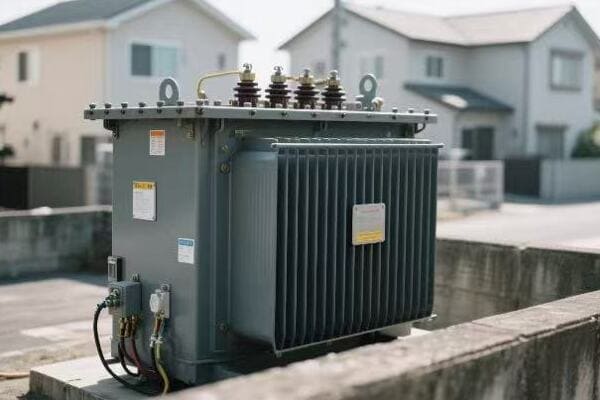
Key Aspects of Load Connection and Current Direction
Let’s explore the main elements that govern load connection and current flow in transformers:
- No-Load vs. Loaded Operation
- Current Relationship Between Primary and Secondary
- Effect of Load Impedance
- Power Factor Considerations
- Polarity and Phase Relationships
No-Load vs. Loaded Operation
Understanding the transformer’s response:
- Magnetizing current in no-load condition
- Load current superimposed on magnetizing current when loaded
- Changes in primary current with varying secondary load
I recently conducted a demonstration for engineering students using a small transformer and variable load. Watching the primary current meter respond instantly to changes in the secondary load was a powerful illustration of the dynamic nature of transformer operation.
Current Relationship Between Primary and Secondary
Balancing energy transfer:
- Inverse relationship between current ratios and turns ratios
- Ampere-turn balance principle
- Core flux remains relatively constant under load
During a recent power quality audit, we used clamp-on ammeters to measure currents in both primary and secondary windings of a distribution transformer. The data clearly showed how the primary current adjusted to match the power drawn by the varying secondary load throughout the day.
Effect of Load Impedance
How the load influences transformer behavior:
- Relationship between load impedance and secondary current
- Voltage regulation under different load conditions
- Short-circuit and open-circuit considerations
Here’s a simplified overview of how load characteristics affect transformer operation:
| Load Type | Impedance | Secondary Current | Primary Current | Voltage Regulation |
|---|---|---|---|---|
| Open Circuit | Infinite | Zero | Minimal (magnetizing only) | Excellent |
| Resistive | Moderate | Moderate | Moderate | Good |
| Inductive | High | Lower | Lower | Poor (lagging) |
| Capacitive | Low | Higher | Higher | Poor (leading) |
Power Factor Considerations
Understanding reactive power flow:
- Effect of load power factor on transformer efficiency
- Reactive power consumption in inductive loads
- Power factor correction techniques
Polarity and Phase Relationships
Ensuring proper connections:
- Additive and subtractive polarity in single-phase transformers
- Phase relationships in three-phase transformer connections
- Importance of proper polarity in parallel operation
Key points about load connection and current direction:
- Load connection directly influences current flow in both windings
- Current in primary and secondary are inversely proportional to their turns ratio
- Load impedance affects the magnitude of current flow and voltage regulation
- Power factor of the load impacts overall transformer efficiency
- Proper understanding of polarity and phase relationships is crucial for correct transformer connections
In my experience, a deep understanding of load connection and current behavior is essential for effective transformer application and troubleshooting. I recall a case where a industrial facility was experiencing unexplained voltage drops during peak production hours. By analyzing the load characteristics and transformer response, we discovered that the highly inductive nature of their new equipment was causing poor voltage regulation. Implementing power factor correction capacitors at key points in their system resolved the issue, showcasing how load-transformer interaction knowledge can solve real-world problems.
For example, in a recent smart grid project, we implemented advanced monitoring systems on distribution transformers to track load patterns and power quality. The real-time data on current flow and power factor allowed for dynamic load balancing and predictive maintenance, significantly improving grid efficiency and reliability. This application demonstrated how a thorough understanding of load-transformer interactions can drive innovations in modern power system management.
As we conclude our discussion on transformer operation, remember that the relationship between load connection and current flow is fundamental to how transformers interact with the power system. This understanding is crucial for designing efficient power distribution systems, troubleshooting issues, and optimizing transformer performance in various applications.
Efficiency Factors: Core Losses, Copper Losses, and Load Impact?
Have you ever wondered why transformers generate heat, or why they’re not 100% efficient? The answer lies in the various losses that occur within the transformer. But what exactly are these losses, and how do they affect a transformer’s performance under different load conditions?
Transformer efficiency is primarily affected by two types of losses: core losses and copper losses. Core losses, also known as iron losses, occur in the transformer’s magnetic core and include hysteresis and eddy current losses. These are relatively constant regardless of load. Copper losses, or I²R losses, occur in the windings and increase with the square of the current, thus varying with load. The impact of these losses changes with load conditions, affecting overall efficiency. At low loads, core losses dominate, while at high loads, copper losses become more significant. Understanding and minimizing these losses is crucial for designing and operating efficient transformers.
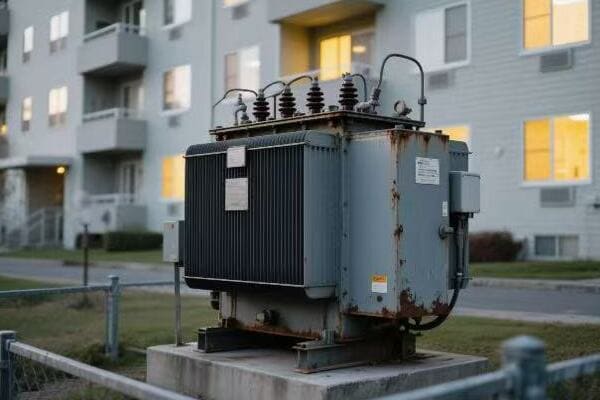
Key Aspects of Transformer Efficiency and Losses
Let’s explore the main elements that contribute to transformer losses and affect efficiency:
- Core Losses: Hysteresis and Eddy Currents
- Copper Losses in Windings
- Load Impact on Efficiency
- Temperature Effects on Losses
- Strategies for Improving Efficiency
Core Losses: Hysteresis and Eddy Currents
Understanding magnetic losses:
- Hysteresis loss due to magnetic domain alignment
- Eddy current losses from induced currents in the core
- Factors affecting core losses (material, frequency, flux density)
I recently conducted an experiment comparing different core materials. The reduction in core losses achieved by using advanced amorphous metals instead of traditional silicon steel was remarkable, especially at lower load levels.
Copper Losses in Windings
Resistive heating in conductors:
- I²R losses in both primary and secondary windings
- Dependence on current and winding resistance
- Skin effect and proximity effect in high-frequency applications
During a recent transformer design project, we used thermal imaging to visualize copper losses in windings. The heat distribution patterns provided valuable insights for optimizing winding design and cooling systems.
Load Impact on Efficiency
Balancing losses across load range:
- Efficiency variation with load
- Concept of maximum efficiency load point
- Importance of proper transformer sizing for the application
Here’s a simplified view of how losses vary with load:
| Load Level | Core Losses | Copper Losses | Total Losses | Efficiency |
|---|---|---|---|---|
| No Load | 100% | Negligible | Low | 0% |
| 25% Load | 100% | 6.25% of full load | Moderate | Lower |
| 50% Load | 100% | 25% of full load | Moderate | Higher |
| Full Load | 100% | 100% of full load | Highest | Lower |
Temperature Effects on Losses
Heat’s impact on performance:
- Increase in winding resistance with temperature
- Effect on insulation life and overall reliability
- Cooling system design considerations
Strategies for Improving Efficiency
Minimizing losses through design:
- Use of low-loss core materials (e.g., amorphous metals)
- Optimized winding designs to reduce copper losses
- Improved cooling systems for better heat dissipation
- Consideration of load profile in transformer sizing
Key points about transformer efficiency and losses:
- Core losses are relatively constant and independent of load
- Copper losses increase with the square of the current
- Efficiency varies with load, typically peaking at 50-70% of rated capacity
- Temperature significantly affects losses and overall transformer life
- Various design strategies can be employed to improve efficiency
In my experience, understanding and managing transformer losses is crucial for both energy conservation and cost-effective operation. I recall a project where we were tasked with improving the efficiency of a data center’s power distribution system. By replacing several oversized transformers with more appropriately rated, high-efficiency units, we achieved a 2% increase in overall system efficiency. While this may seem small, in the context of a large data center’s energy consumption, it translated to significant annual cost savings and reduced environmental impact.
For example, in a recent renewable energy project, we faced the challenge of designing transformers for a wind farm with highly variable output. By implementing a hybrid core design that combined low-loss amorphous metal sections for low-load efficiency with traditional silicon steel for high-load performance, we created transformers that maintained high efficiency across a wide range of loading conditions. This innovative approach significantly improved the overall energy yield of the wind farm, demonstrating how advanced loss management techniques can address specific operational challenges in modern power systems.
As we conclude our exploration of transformer operation, remember that efficiency considerations are not just about reducing energy waste. They directly impact the transformer’s performance, lifespan, and the overall effectiveness of the power distribution system it serves.
Real-World Examples of Transformer Operation
To illustrate how transformers function in various applications, let’s look at some real-world examples:
-
Power Plant Step-Up Transformer:
- Input: 20 kV from generator
- Output: 400 kV for long-distance transmission
- Turns Ratio: 1:20
- Key Feature: Large, oil-cooled design for high efficiency
-
Neighborhood Distribution Transformer:
- Input: 11 kV from medium-voltage lines
- Output: 240/120 V for residential use
- Turns Ratio: Approximately 46:1
- Key Feature: Pole-mounted or pad-mounted designs for urban areas
-
Industrial Plant Transformer:
- Input: 33 kV from utility supply
- Output: 415 V for factory equipment
- Turns Ratio: Approximately 80:1
- Key Feature: Often dry-type for indoor installation, with multiple taps for voltage adjustment
-
Electronic Device Transformer:
- Input: 120 V AC from wall outlet
- Output: 5-12 V DC for electronic circuits
- Turns Ratio: Varies (e.g., 24:1 for 5V output)
- Key Feature: Includes rectification and smoothing for DC output
These examples showcase how transformers adapt to different voltage requirements across the power system, from generation to end-use applications.
FAQs: Understanding Transformer Operation
To address some common questions about transformer operation:
-
How does a transformer increase or decrease voltage?
A transformer changes voltage through the ratio of turns in its primary and secondary windings. If the secondary has more turns than the primary, voltage increases; if it has fewer turns, voltage decreases. -
What is the function of a transformer core?
The transformer core provides a low-reluctance path for magnetic flux, enhancing the coupling between primary and secondary windings. It concentrates the magnetic field, improving the efficiency of energy transfer. -
Why do transformers only work with AC?
Transformers rely on changing magnetic fields to induce voltage in the secondary winding. AC naturally provides this changing field, while DC would only create a static field, which doesn’t induce voltage. -
What causes power loss in a transformer?
The main sources of power loss in a transformer are core losses (hysteresis and eddy currents in the core) and copper losses (resistive heating in the windings). These losses generate heat and reduce overall efficiency. -
Can transformers change frequency?
Standard transformers do not change frequency; the output frequency matches the input. Frequency change requires additional electronic circuits or special motor-generator sets.
Conclusion
Electrical transformers are fundamental to modern power systems, enabling efficient voltage transformation for transmission, distribution, and various applications. Understanding their operation, from magnetic induction principles to efficiency considerations, is crucial for effective design, operation, and maintenance of electrical systems.
Thank you for joining me in this exploration of transformer operation. Stay curious, stay informed, and let’s keep pushing the boundaries of what’s possible in power distribution and electrical engineering.
Free CHBEB Transformer Catalog Download
Get the full range of CHBEB transformers in one catalog.
Includes oil-immersed, dry-type, pad-mounted, and custom solutions.
Quick Message
Request A free quote
We'd like to work with you
- +86 15558785111
- chbebgroup@chbebpower.com
- +86 15558785111
What We Do
CHINA BEI ER BIAN (CHBEB) GROUP, with 218 million in registered capital, originated from Beijing Beierbian Transformer Group. Headquartered in Beijing for R&D, it operates major production bases in Nanjing and Yueqing, producing high-quality products.
Latest Product
address
BeiJing
No 3,RongJing East Road,BeiJing Economic Technological Development Area,BeiJing,China
JiangSu
No 7️Xiangfeng Road,Jiangning,NanJing,JiangSu,China
WenZhou
No.211, Wei 16 Road, Industrial Zone, Yueqing, Wenzhou, Zhejiang, China.
XiangYang Industrial Zone ,YueQing,WenZhou,ZheJiang,China
contact us
- chbebgroup@chbebpower.com
- +86 13057780111
- +86 13057780111
- +86 15558785111
Copyright © Bei Er Bian Group


